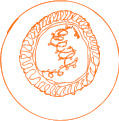

 Stem cells are primal cells found in all multi-cellular
organisms that are able to reproduce and can differentiate into various
specialized cell types. This is a fairly new science which began in the
early 1960s. There are three broad categories of stem cells. They are:
(1) Embryonic stem cells, which are taken from an early stage embryo of
approximately four to five days old and consists of 50 to 150 cells.
These stem cells can develop into each of more than 200 cells types of
the adult body when given sufficient stimulation. (2) Adult stem cells,
which are found throughout the body that normally reproduce to
replenish dying cells and regenerate damaged tissues. (3) Cord blood
stem cells found in the umbilical cord and are able to differentiate
into all of the specialized embryonic tissues.
Stem cells are primal cells found in all multi-cellular
organisms that are able to reproduce and can differentiate into various
specialized cell types. This is a fairly new science which began in the
early 1960s. There are three broad categories of stem cells. They are:
(1) Embryonic stem cells, which are taken from an early stage embryo of
approximately four to five days old and consists of 50 to 150 cells.
These stem cells can develop into each of more than 200 cells types of
the adult body when given sufficient stimulation. (2) Adult stem cells,
which are found throughout the body that normally reproduce to
replenish dying cells and regenerate damaged tissues. (3) Cord blood
stem cells found in the umbilical cord and are able to differentiate
into all of the specialized embryonic tissues.
To understand why stem cells are so useful, we might consider the repairs on a car as an analogy. If your car is overheating, what is likely to be the cause? Common sense tells you that the electrical system or the motor itself are not the probable villains. It is obviously the cooling system that has a problem, and there are only a few components that make up the cooling system. A quick check could tell you if you have enough fluid in the cooling system, and if so, a blockage or a dysfunctional water pump would be the likely culprit. It is relatively easy to determine if there is a blockage so if there is not, the mechanic would be likely to replace the water pump.
 Many human diseases can be treated in much the same way.
If a person is diabetic and his blood sugar is very high, it is not
likely that the problem is being caused by the heart or the lungs. We
all know that an organ called the pancreas secretes a substance called
insulin that allows the sugars in our food to be processed. If there is
not enough insulin, our blood sugar will be too high and that has
numerous side effects on the individual. We now know that in the
pancreas there are cells grouped into what are called the "islets of
Langerhans" and each islet contains approximately 1000 cells. These
cells are grouped into four groups. Sixty-five to eighty percent are
beta cells which produce Insulin and Amylin, 15 to 20 percent are alpha
cells which release Glugagon an activating agent, 3 to 10 percent are
delta cells that produce Somatostatin, an inhibiting agent, and 1
percent are PP cells which contain a polypeptide. All of this tells us
that the design of the human digestive system is incredibly complex.
How do you fix it when something is wrong?
Many human diseases can be treated in much the same way.
If a person is diabetic and his blood sugar is very high, it is not
likely that the problem is being caused by the heart or the lungs. We
all know that an organ called the pancreas secretes a substance called
insulin that allows the sugars in our food to be processed. If there is
not enough insulin, our blood sugar will be too high and that has
numerous side effects on the individual. We now know that in the
pancreas there are cells grouped into what are called the "islets of
Langerhans" and each islet contains approximately 1000 cells. These
cells are grouped into four groups. Sixty-five to eighty percent are
beta cells which produce Insulin and Amylin, 15 to 20 percent are alpha
cells which release Glugagon an activating agent, 3 to 10 percent are
delta cells that produce Somatostatin, an inhibiting agent, and 1
percent are PP cells which contain a polypeptide. All of this tells us
that the design of the human digestive system is incredibly complex.
How do you fix it when something is wrong?
 In the case of the car, someone has to have carefully
built a water pump that will do what the original equipment was
designed to do. That means that the original blueprint has to be
understood, and all parts have to be carefully put together in the same
way that the original equipment was produced. To fix diabetes, the same
process has to be used. In type 1 diabetes in which insulin shots are
required, the islets of Langerhans have been destroyed. If we can
develop stem cells that will turn into islets of Langerhans and can
inject them into the pancreas of the diabetic we will have replaced
what is missing with an identical component. Science is very close to
accomplishing this from adult stem cells.
In the case of the car, someone has to have carefully
built a water pump that will do what the original equipment was
designed to do. That means that the original blueprint has to be
understood, and all parts have to be carefully put together in the same
way that the original equipment was produced. To fix diabetes, the same
process has to be used. In type 1 diabetes in which insulin shots are
required, the islets of Langerhans have been destroyed. If we can
develop stem cells that will turn into islets of Langerhans and can
inject them into the pancreas of the diabetic we will have replaced
what is missing with an identical component. Science is very close to
accomplishing this from adult stem cells.
Embryonic stem cells are not the answer to this type of research. Embryonic cells can become anything, which is why people have had an interest in them, but this is also a major problem. Embryonic cells can be misled by biochemical signals when they are transplanted into an adult, leading to unwanted cell types and sometimes to tumor formation.
 Three researchers at the University of Missouri have
been able to sustain adult stem cells and induce them to turn into
specific cell types by exposing them to different chemical signals. No
abnormal tissue results from this type of stem cell work. Elmer Price,
Randall Prather, and Mike Foley at the University of Missouri have
taken the lead in this research. Price says, "In theory, embryonic stem
cells have the ability to become almost any cell type or organ. Very
complex chemical signals need to be in place with embryonic stem cells
in order for them to develop into the appropriate type of cell.
However, we have shown that if you can isolate adult stem cells, you
can make them generate the appropriate type of cell with much more ease
and specificity."
Three researchers at the University of Missouri have
been able to sustain adult stem cells and induce them to turn into
specific cell types by exposing them to different chemical signals. No
abnormal tissue results from this type of stem cell work. Elmer Price,
Randall Prather, and Mike Foley at the University of Missouri have
taken the lead in this research. Price says, "In theory, embryonic stem
cells have the ability to become almost any cell type or organ. Very
complex chemical signals need to be in place with embryonic stem cells
in order for them to develop into the appropriate type of cell.
However, we have shown that if you can isolate adult stem cells, you
can make them generate the appropriate type of cell with much more ease
and specificity."
Remember that blood-derived adult stem cells are normally used by the body for regeneration and repair, and by copying what God has designed for the maintenance of the human body, some wonderful solutions to the afflictions humans endure are possible. Stem cell research is a good thing, and as we learn more about this part of our body's makeup we have to understand even more fully David's description of what God has done in forming us from the dust of the earth: "I will praise thee Lord, for I am fearfully and wonderfully made" (Psalm 139:14).
Back to Contents Does God Exist?, NovDec07.